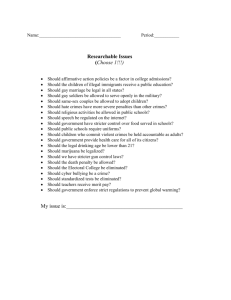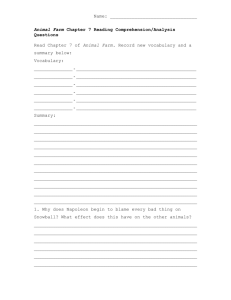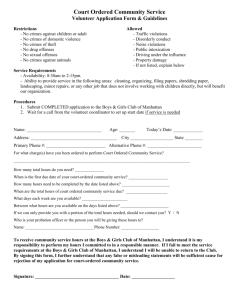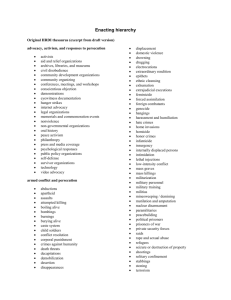CRIMES OF THE POWERLESS PRE
advertisement
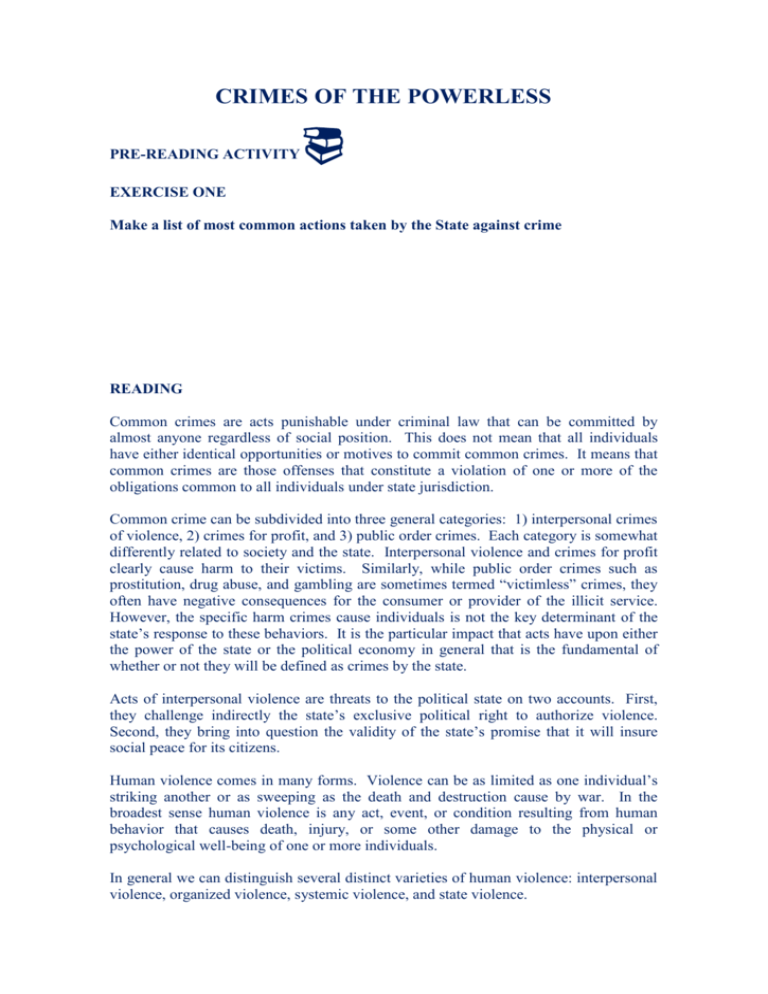
CRIMES OF THE POWERLESS PRE-READING ACTIVITY EXERCISE ONE Make a list of most common actions taken by the State against crime READING Common crimes are acts punishable under criminal law that can be committed by almost anyone regardless of social position. This does not mean that all individuals have either identical opportunities or motives to commit common crimes. It means that common crimes are those offenses that constitute a violation of one or more of the obligations common to all individuals under state jurisdiction. Common crime can be subdivided into three general categories: 1) interpersonal crimes of violence, 2) crimes for profit, and 3) public order crimes. Each category is somewhat differently related to society and the state. Interpersonal violence and crimes for profit clearly cause harm to their victims. Similarly, while public order crimes such as prostitution, drug abuse, and gambling are sometimes termed “victimless” crimes, they often have negative consequences for the consumer or provider of the illicit service. However, the specific harm crimes cause individuals is not the key determinant of the state’s response to these behaviors. It is the particular impact that acts have upon either the power of the state or the political economy in general that is the fundamental of whether or not they will be defined as crimes by the state. Acts of interpersonal violence are threats to the political state on two accounts. First, they challenge indirectly the state’s exclusive political right to authorize violence. Second, they bring into question the validity of the state’s promise that it will insure social peace for its citizens. Human violence comes in many forms. Violence can be as limited as one individual’s striking another or as sweeping as the death and destruction cause by war. In the broadest sense human violence is any act, event, or condition resulting from human behavior that causes death, injury, or some other damage to the physical or psychological well-being of one or more individuals. In general we can distinguish several distinct varieties of human violence: interpersonal violence, organized violence, systemic violence, and state violence. In the second category of crimes, crimes for profit, financial gain is the primary motive for most serious forms of common crimes, just as it is the motive for corporate and white-collar crime. Lacking the institutional resources and positions of trust available to corporate managers and other business professional, poorer offenders are limited to relatively crude forms of acquisition through illegal advantage. Because they require little or no capital, robbery, burglary, larceny, and auto theft are the modal forms of serious crime among the working class. For the third category, public order offenses, in terms of the volume of cases handled, they represent the predominant form of law violation in America and as such place a larger burden on the resources of the criminal justice system than any other form of law violation. Public order offenses include public intoxication; disorderly conduct; gambling; the possession, sale, and use of narcotics, hallucinogens and other controlled substances; prostitution; homosexual solicitation, liquor law violations, and traffic violations. These offenses are classified by the FBI as less serious offenses. Most public order offenses are either misdemeanor violations or what are termed “lesser felonies,” and unlike serious felonies, they are adjudicated in lower courts. EXERCISE TWO After reading the text, complete the following outline. I. ________________ II. Types of crimes A. 1. 2. B. 1. 2. C. Examples: EXERCISE THREE 1. How are felonies, misdemeanors and petty offenses classified in most the USA? 2. How are those types of offenses classified in Nicaragua? 3. What are the most crimes committed in Nicaragua?
